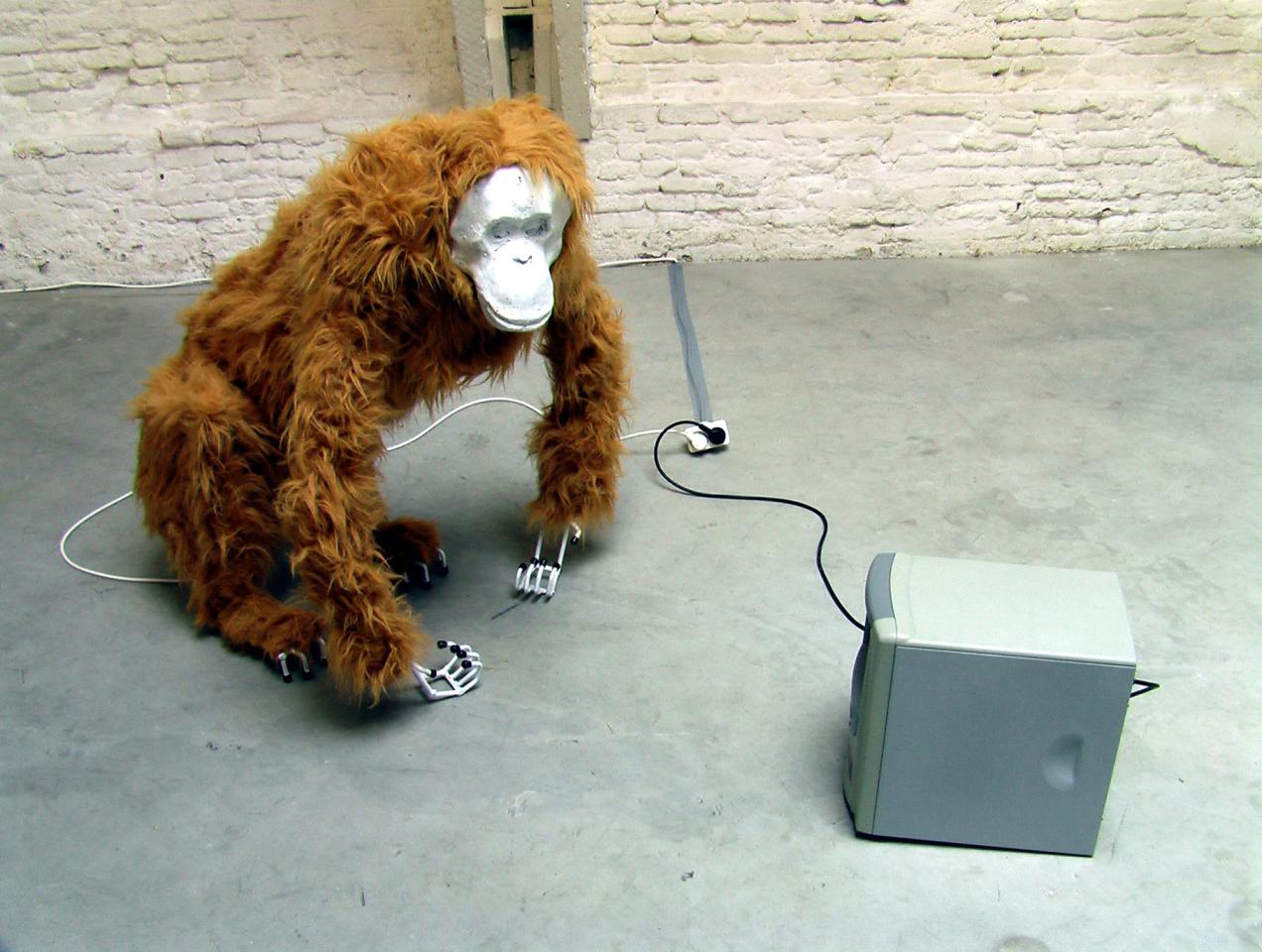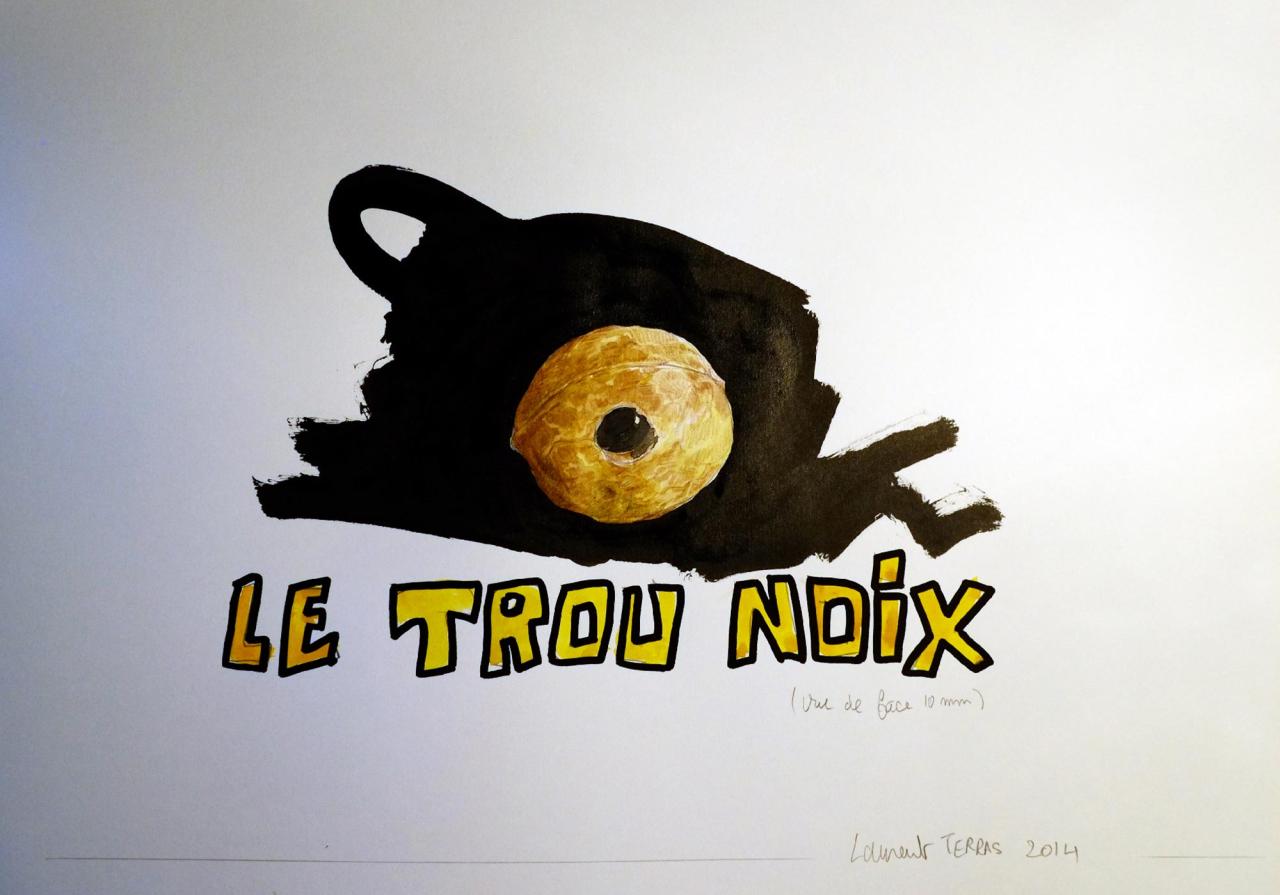Laurent Terras
Born in 1971
Lives and works in Anglet and Sérilhac


There is a sense of ecological urgency in Laurent Terras’ work. We should, however, clarify that his posture is largely ironical. One could even make up a new category of thought for it, half way between realisation and common sense: “ecologirony”.
And so the artist proposes to heat up an iron in the sun (Les Ultra-terrestres [Repassage] / The Ultra-terrestrials [Ironing], 2017) or to fit a washing machine drum to a bicycle (L’Essorage des utopies [The Wringing of utopias], 2009) instead of plugging in regular household appliances. The energy saving thus achieved should help save the planet. But the artist is well aware, as are we, that while these efforts show commitment and are carried out with the best intentions, they are also insignificant when faced with the scope of the issue and the damage done by several generations.
This is the rift that Laurent Terras chooses to slip into – the rift between inadequacy and disaster. According to the butterfly effect theory, each of our actions has a consequence that we are seldom aware of. For instance, did you know that a single Google search requires the same amount of energy as boiling a litre of water in a saucepan? This is the meaning behind the work Chercher encore (Still searching, 2014). The title of the piece is spelled out with radiator hoses through which coolant is injected by an electric pump. Will the cooling fluid be of any help against global warming and the overheating of data centres? In any case, the works that Laurent Terras creates using this method encourage us to take a step back. Seen up close, the piece is reminiscent of someone’s blood vessels on a drip. Seen from a higher angle, one might imagine a saturated motorway network defacing the planet, in which the air bubbles look like frenzied cars driving in lines, stuck in hysterical traffic and using up more and more fuel. Fuel is also hinted at in the series of fired stoneware ceramics TechnoFossiles (TechnoFossils, 2012): oil and petrol canisters, a gas bottle – everything we currently call fossil fuels, in this case nothing but distant and unpleasant memories of a bygone era in a future where humanity will have finally found the right alternative energy source. Perhaps even human beings will make their way into this museum of obsolete things. Maybe they will have gone extinct a long time ago, or will have simply left the planet they have methodically destroyed.
One must therefore look at the bigger picture, perhaps aboard a broken down rescue space capsule (Space Nurse Project, 2004); or perhaps start over again with a primate looking at a PC tower, straight from Stanley Kubrick’s 2001: A Space Odyssey (Carl et le dernier singe [Carl and the last monkey], 2005). This is precisely where the alternative lies. The gap between inadequacy and disaster comes with making a choice between redeeming DIY and dysfunctional, stagnant advanced technologies. Laurent Terras has chosen low-tech and DIY because they offer more possibilities. They enable him to exploit a wide range of so-called “poor” materials, from ceramics to basic electronics. In this sense, drawing – the most primal medium there is – becomes a melting pot for all sorts of projects, in that it represents a space for freedom. DIY is also a way of freeing oneself from technology that is too pervasive and also generates much-needed independence in a self-sufficient and collaborative economy, as illustrated in the piece Hydroponie, Flower power et Effet de serre (Hydroponics, Flower power and the Greenhouse effect, 2005), the purpose of which was to grow a variety of plants sown by visitors of the exhibition.
Because we are not yet able to touch the stars – at least not as ordinary mortals – we can still explore what is left of the planet with makeshift vehicles. The images captured by the ERM Rotover (2006) on its various exploration missions in the south-west region of France and elsewhere reveal that the Earth is still a beautiful place that has a lot to offer if one is willing to look more closely and with a keener eye.
Laurent Terras. An ecologirony handbook.
By Richard Leydier, 2018.
Documents d'artistes Nouvelle-Aquitaine